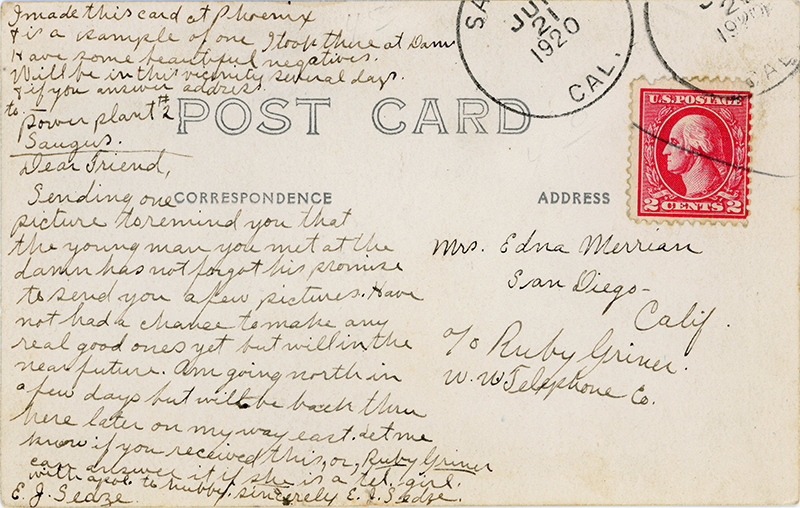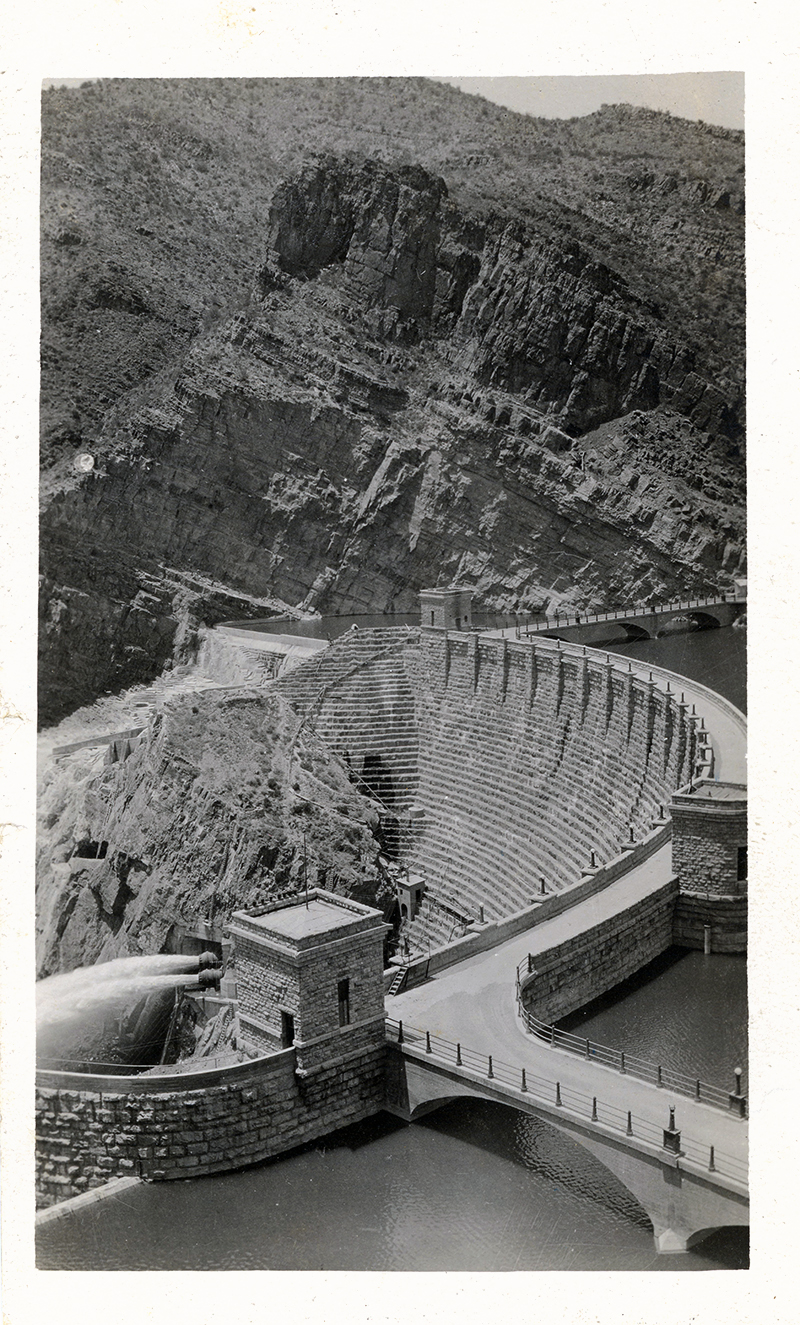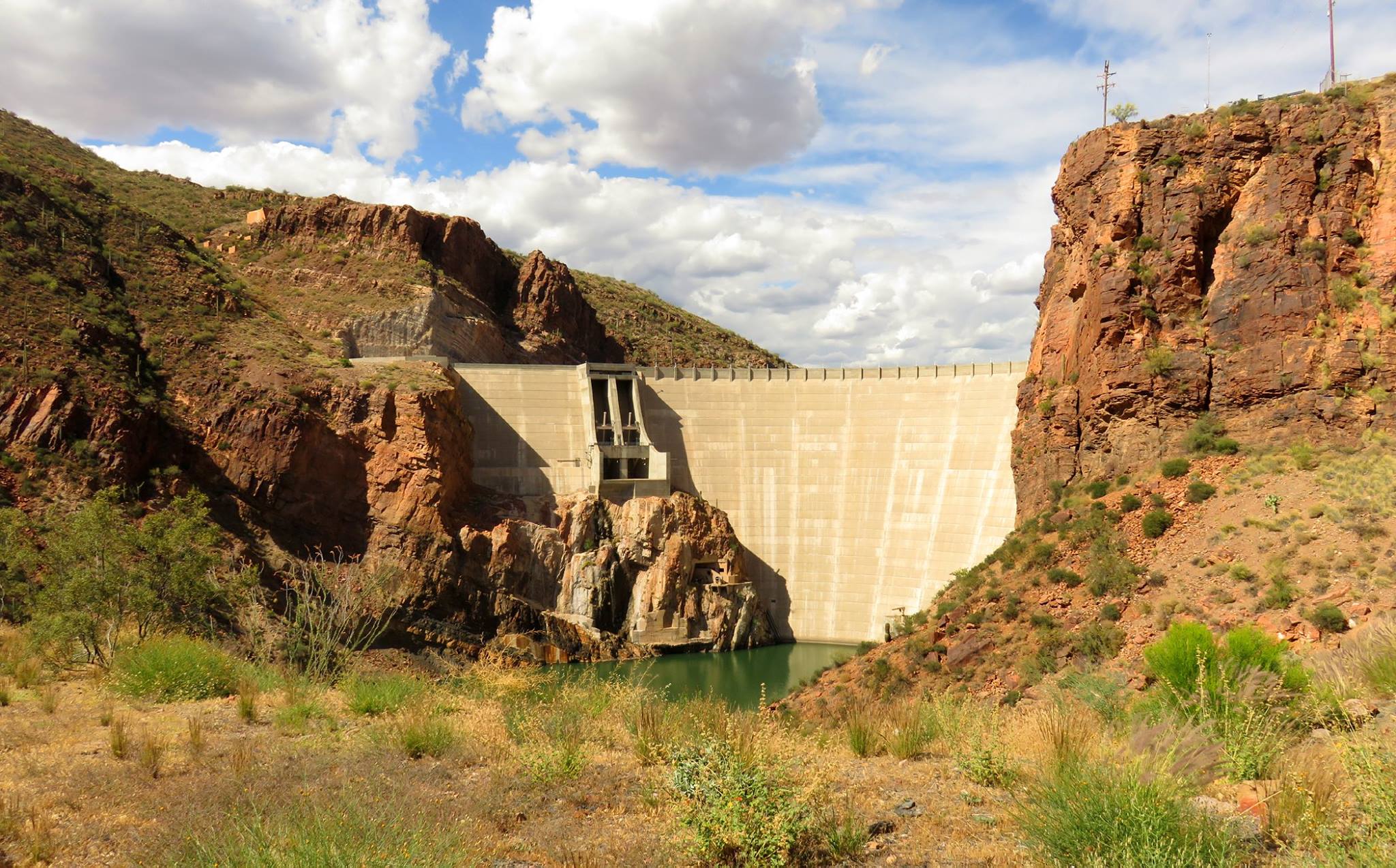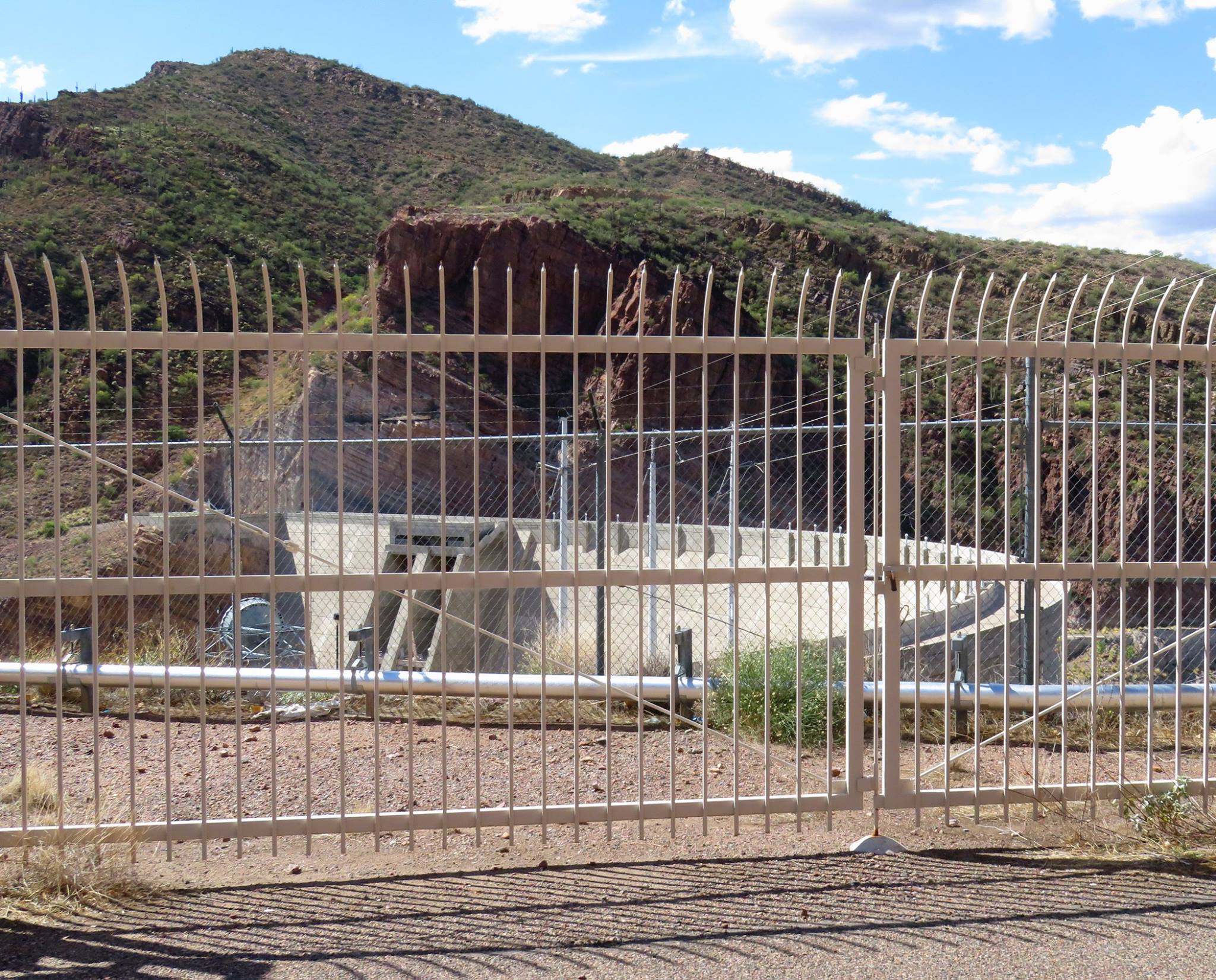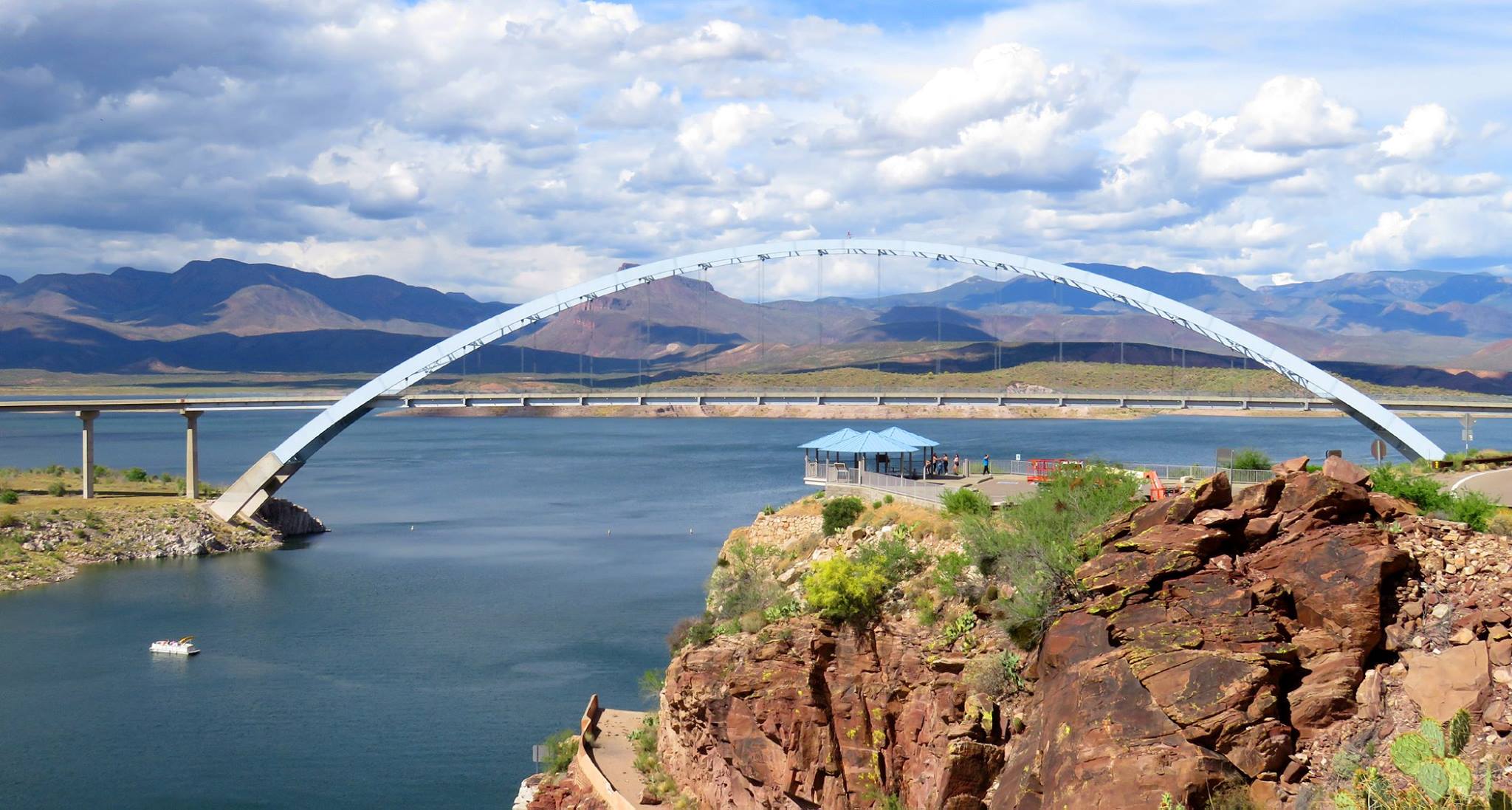|
|
San Francisquito Canyon
|
Normally we'd feature the picture side of a real photo postcard, but in this instance, from a Santa Clarita Valley history perspective, it's the writing on the back that interests us. A "young man" named E.J. Sedze had recently arrived, or returned, to Power House No. 2 in San Francisquito Canyon when he mailed this postcard from Saugus on June 21, 1920. He had visited the Roosevelt Dam in Arizona and had one of his photos processed into this RPPC (a common option from photo labs). His photo shows the Roosevelt Dam as it appeared at the time; the dam, completed in 1911, is located outside of Phoenix at the northeast end of the Apache Trail in the Superstition Mountains/Tonto National Forest. It impounds the Salt River and turned much of the Tonto Basin into Roosevelt Lake. (The color photos show what the Roosevelt Dam and Roosevelt Lake looked like in 2016. The dam was renovated and expanded from 1989 to 1996.) We don't know what E.J. Sedze was doing at Power House No. 2, which was completed in this same year (1920). Maybe he was a construction worker; maybe he was an L.A. water department worker; maybe he was a telephone lineman (considering the addressee); maybe he was just a tourist passing through. He did stay at PH-2 at least long enough to receive mail there before moving on. Back reads: I made this card at Phoenix It is a sample of one I took there at Dam Have some beautiful negatives. Will be in this vicinity several days & if you answer, address to — Power plant #2 / Saugus. Dear Friend, Sending one picture to remind you that the young man you met at the damn has not forgot his promise to send you a few pictures. Have not had a chance to make any real good ones yet but will in the near future. Am going north in a few days but will be back thru here later on my way east. Let me know if you received this, or, Ruby Griner can answer it if she is a tel. girl. With apol. to hubby. Sincerely E.J. Sedze Addressed to: Mrs. Edna Merrian San Diego / Calif. c/o Ruby Griner / W.W. Telephone Co. A quick Internet search for E.J. Sedze reveals an entry in the "List of Registered Automobiles in Nevada for 1920" indicating he was licensed to ride a motorcycle. The listing shows a residence of Yerington, Nev. He owned a Harley-Davidson. Research from Ann Stansell: E.J. Sedze is likely Emile John Sedze, son of John and Martha Sedze of France. Born June 17, 1892, in Hollister, San Benito County, Calif.; 1917 WWI draft card - Kern County, overseer at Connor Station; 1930 census - Montebello, mail carrier; 1940 census - Los Angeles, mail carrier; 1942 WWII draft card - Los Angeles County, employer is U.S. government; 1958 marriage to Jessie Jones in Clark County, Nev.; Died Oct. 12, 1971, in Los Angeles County; Burial - Calvary Cemetery. Inscription on the grave of his wife Jessie indicates she was a wife and mother. About the St. Francis Dam Ranchers in the Owens Valley didn't take too kindly to the aqueduct that drained their underground springs and diverted water to Los Angeles. By 1924, the predecessor agencies to the city of L.A.'s Department of Water and Power had experienced several instances of sabotage. The St. Francis Dam in San Francisquito Canyon was intended to serve as a backup supply in case the flow of Owens Valley water was interrupted. Construction began in August, 1924. Water began to fill the reservoir above the dam on March 1, 1926. Two months later the dam was finished, at a height of 185 feet. The reservoir held 12½ billion gallons of water, about a year's supply for otherwise-dry Los Angeles. At 11:57:30 on the night of March 12, 1928, half of the dam suddenly collapsed. An immense wall of water rushed down the canyon at 18 miles per hour, totally decimating the concete-and-steel Powerhouse No. 2 hydroelectric generating station as well as the Frank LeBrun Ranch, the Harry Carey Ranch and Trading Post, and everything else that stood in the way. Floodwaters met the Santa Clara River at Castaic Junction and headed west toward the Pacific Ocean. The communities of Piru, Fillmore, Santa Paula, Saticoy and much of Ventura were leveled before the water, mud and debris completed their 54-mile journey to the ocean at 5:25 a.m. on March 13th. At dawn's early light, an estimated 411 people lay dead. Some bodies were buried under several feet of earth and were still being discovered in the 1950s. In fact, remains believed to be those of a dam victim were found in 1994. The disaster that ended the career of the famous engineer and DWP chief William Mulholland was the second-worst disaster in California history in terms of lives lost, surpassed only by the great San Francisco earthquake and fire of 1906.
LW2845: 9600 dpi jpegs from original RPPC purchased by Leon Worden. Color photos by Leon Worden, May 2016. |
The site owner makes no assertions as to ownership of any original copyrights to digitized images. However, these images are intended for Personal or Research use only. Any other kind of use, including but not limited to commercial or scholarly publication in any medium or format, public exhibition, or use online or in a web site, may be subject to additional restrictions including but not limited to the copyrights held by parties other than the site owner. USERS ARE SOLELY RESPONSIBLE for determining the existence of such rights and for obtaining any permissions and/or paying associated fees necessary for the proposed use.
